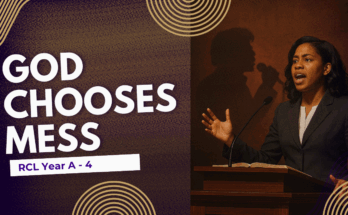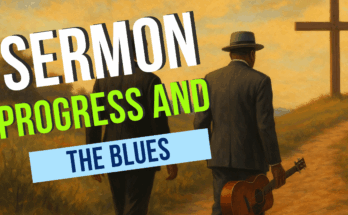As an Amazon Associate I earn from qualifying purchases.
Mitchell’s second characteristic of Black preaching is the use of tone. This includes “whooping” but also many forms of intonation and tuning. Mitchell notes that many use this in the “celebration” of the sermon which should be connected to the content of the sermon.
I had a conversation with a classmate, the Rev. Brandon Blake, over “whooping” in black preaching. You can find a link to some discussion of that African American art form here. The conversation centered around definitions of terms that Rev Martha Simmons used when she was explaining “whooping.”
Whooping or Tuning
The first thing that was of interest is the differentiation between “whooping” and “tuning.” Dr. Simmons noted that lay people and congregants often “tune” to help the preacher who is “whooping” keep his or her pitch. In addition, Simmons noted that some preachers just tune because they don’t have the ability to whoop.
the difference between the two seems to be one of playing with a musicality (tuning) versus actually going into the musicality and staying there (whooping). Blake stated that oftentimes the whoop begins as a tune. The preacher begins playing with the musicality. The preacher’s voice may go back and forth between a musical quality and the normal speaking voice. That is the tuning. Many if not all can do that and I have heard Black preachers who would not even consider “whooping” actually do that on occasion. However when the preacher actually begins the whoop, the music takes over and the playing back and forth normally ceases.
Nurture or Nature?
Simmons seems to believe that whooping is something that is both by nurture and by nature. In other words whoopers are both born and made. This is interesting in that Rev. Jasper Williams believes that anyone can whoop. Simmons does not believe that, but she does seem to believe that anyone can “tune” as noted above.
Fear as Impediment
Brandon Blake noted that sometimes fear is an impediment to whooping. When a preacher goes into the whoop that preacher is giving her or himself over to the Spirit. The idea is to let go totally to the in-working of the Spirit. However fear of looking bad or messing up or the like might make the whoop stop at a tune. It seems that the preacher has more control of the tune than the whoop, but certainly that is not always the case.
Let the Celebration be Celebration
Another important component of the lecture was a statement by Rev Simmons to the effect that a celebration should not be teaching but pure celebration. If the preacher adds teaching to the celebration component of the sermon then the celebration of the Gospel is dampened. This is applicable to whoopers and non-whoopers. Teach during the sermon, but when it is celebration time, celebrate the truth of what you have taught rather than continuing to teach.
Amazon and the Amazon logo are trademarks of Amazon.com, Inc, or its affiliates.






